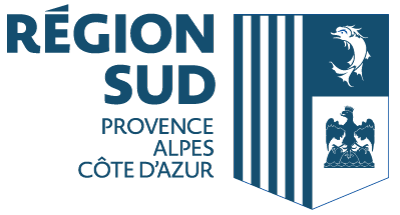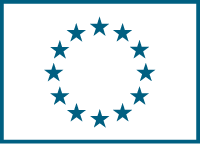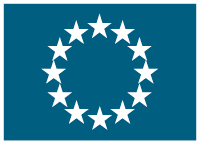Restoration of biotope for Botaurus stellaris, Anas penelope and Limosa limosa in the SPA Ilperveld
(SPA Ilperveld)
Date du début: 1 avr. 2002,
Date de fin: 1 juil. 2007
PROJET
TERMINÉ
Background
At the end of the last ice age, some 10,000 years ago, extensive peat bogs formed behind the North Sea dune belt. Starting in the early Middle Ages most of the peat was dug out, and where this did not happen the bogs settled as a result of drainage. Brackish bog meadows formed, surrounded by and criss-crossed with a network of ditches and canals, which with their broad fringes of reeds became an excellent biotope for reed birds.
Traditionally these meadows were used for hay-growing or pasture, and rotted farmyard manure was spread to make the poor peat soil a little more fertile. This form of land management turned the Dutch bog meadows into important nesting and foraging areas for meadow birds, above all the black-tailed godwit (Limosa limosa), but it was also important (on account of the network of ditches) for the survival of the root vole (Microtus oeconomus). However, a recent switch to grazing without extensive manure spreading has resulted in acidification of the grassland. This led to the explosive growth of soft rush, which made the area less suitable for meadow birds. The population of black-tailed godwits fell from 44 breeding pairs/100 ha in 1995 to just 18 breeding pairs in 2000.
The ditches meanwhile gradually filled up, thereby reducing the nesting sites for bitterns (Botaurus stellaris), wigeons (Anas penelope) and black terns (Chlidonias niger).
Objectives
The main aim of this project was to improve breeding and foraging opportunities for marsh and meadow birds at Ilperveld, specifically the black-tailed godwit, bittern and widgeon. This was to be achieved by a habitat restoration programme involving eradication of soft rush (Juncus effusus) from acidified grasslands via mowing, followed by use of manure and lime to combat acidification. A deep-litter stable was planned to produce manure traditionally and former peat diggings were to be excavated in order to reactivate the natural terrestrialisation dynamic, allowing bitterns and widgeons to breed in greater numbers. Adjustable dams were also planned to control eutrophic water from the surroundings and an information campaign was proposed to strengthen and sustain support for the LIFE conservation measures. The project area targeted the central part of a larger SPA.
Results
All project actions were completed resulting in a 73% reduction of soft rush (against a revised project target of 50%). This is less than the higher target figure of 90% which was foreseen by combining the mowing and liming/manuring with the use of herbicides.
The cattle stable was built with a loosebox system, allowing the cows to walk on straw and mix their manure themselves, thereby creating âcoarse manureâ. This system produces the required type of manure for meadow birds, since it contains a lot of worms and insects that serve as food for the birds.
Issues concerning acidification remain with project monitoring data suggesting that manuring, on its own, is not enough to increase the pH (it can even decrease). The combined application of lime and manure was shown to offer more potential in terms of increasing pH levels to a value of 4.5 or higher but this had not been fully achieved the by the end of the project. Data from 2006 indicated that a pH of 4.5 or higher had been achieved in 43% of the acid parcels where liming was applied.
Water quality was only partially addressed during the project and the beneficiary recognises that more work is required to reach the target of increasing transparency to >75 cm (after 4 years). Particular problems remain in large connecting ditches, which still need to be dredged and remain muddy with suboptimal natural conditions. Improvements are expected as a result of another project in the area (Ilperveld Integraal) tackling water quality. More promising LIFE results have been achieved in the isolated bog holes and ditches where water quality and fish stocks have improved.
Monitoring of bird species and fish populations indicates that the project did not achieve its targets within the operational period but the beneficiary believes that the disturbance caused by the works in the field has acted as a temporary deterrent to population increases. Nevertheless, the number of breeding pairs within the project area remained stable. There was no decrease in black-tailed godwit numbers (15-18 breeding pairs /100 ha), but these numbers did not reach the desired goal of 20 breeding pairs/100 ha. No substantial increase in breeding bitterns was noted but it is expected that young wet reed will develop, and that this will increase the number of territories for the bittern. The numbers of common snipe (Gallinago gallinago) present in the area were noted to decrease. Challenges remain in identifying suitable management regimes that successfully balance the needs of both marsh birds and meadow birds.
Some opposition was experienced from local anglers who had concerns about the project dams but these concerns were overcome since the dams were shown to provide important environmental and economic benefits for local farmers and Nature Reserve managers.
The beneficiary concludes that their LIFE project has made crucial contributions to improving the habitats for key species at Ilperveld but assessing the full impact of their efforts is considered to require longer term monitoring. Furthermore it is considered difficult to assess the results of the LIFE project in isolation, as it is one of the several projects in the area.
Sustainability of LIFE activities will be assured through on-going work by the beneficiary and land use agreements with local farmers, including traditional manure production techniques using the deep litter stable. These form part of the ten year management plan which covers the period up to 2017 and represents the projectâs After LIFE Conservation Plan.
Disclaimer : This « results » section should be considered as a draft until the Commission has completed its evaluation .
Accédez au prémier réseau pour la cooperation européenne
Se connecter
ou
Créer un compte
Pour accéder à toutes les informations disponibles
Coordinateur
- E.M. KUIPER
- (Netherlands)




